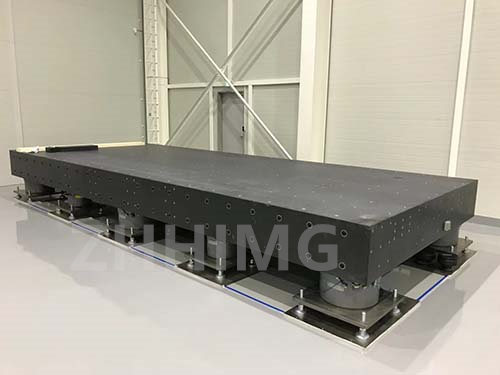Granite components are widely used in the manufacturing industry due to their robustness and dimensional stability. They are capable of maintaining accuracy in harsh environments and sustaining high levels of mechanical stresses, making them an ideal material for cutting-edge devices that require high precision. In the context of three-coordinate measuring machines, granite is considered the go-to material for building machine frames as they can provide stable, rigid, and vibration-dampening platforms, guaranteeing unmatched accuracy and performance.
However, to maintain the performance and accuracy of granite components during use, they need to be appropriately handled and maintained. Here are some crucial factors that play a vital role in maintaining the accuracy and performance of granite components.
1. Proper design and manufacturing techniques
The design and manufacturing of granite components must be carried out with proper techniques to ensure they meet the desired accuracy specification. The granite material used must be carefully chosen, and the design must be carried out to minimize deformations and thermal expansions. The manufacturing team needs to ensure that the surface finish of the granite components is within the acceptable range and that the dimensions are within the specified tolerance.
2. Proper handling and installation
The handling and installation of granite components should be carried out with the utmost care to avoid damages that can affect their performance and accuracy. Granite components are delicate and can easily crack or chip if dropped or mishandled. It's necessary to use suitable equipment to handle and move the granite components and take extra caution during the installation process. Careful handling and installation can significantly improve the life-span of the components.
3. Regular maintenance and calibration
Like any other piece of equipment, three-coordinate measuring machines equipped with granite components require regular maintenance and calibration to maintain their accuracy and performance. The machine should be calibrated after installation and periodically throughout its lifespan. Calibration should be performed by a trained professional using calibrated equipment.
4. Temperature control
Granite components are sensitive to temperature changes and must be operated in a controlled environment to minimize thermal expansion and deformation. The ideal temperature range for granite components is between 20 to 25°C. The environment around the machine should be temperature and humidity-controlled to minimize the effects of thermal expansion, which could affect the accuracy of the measurements.
5. Proper cleaning
Granite components must be cleaned regularly using appropriate cleaning solutions to maintain their surface finish and prevent corrosion. The cleaning solution should be non-acidic and non-abrasive to avoid causing damage to the surface. When cleaning, the surface should be wiped with a clean, soft cloth following a recommended cleaning routine.
In conclusion, granite components are a crucial part of three-coordinate measuring machines and play an essential role in maintaining accuracy and performance. Proper handling, installation, regular maintenance, temperature control, and cleaning are necessary for keeping granite components working at their best. Investing in granite components and following the above guidelines can significantly improve the lifespan of the machines, thereby helping to save maintenance costs in the long run.
Post time: Apr-02-2024

